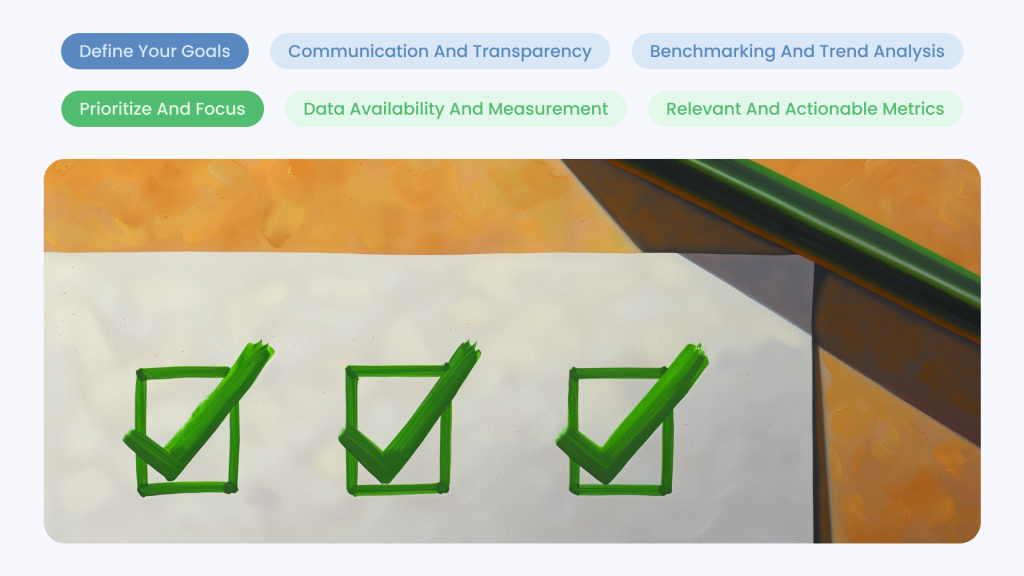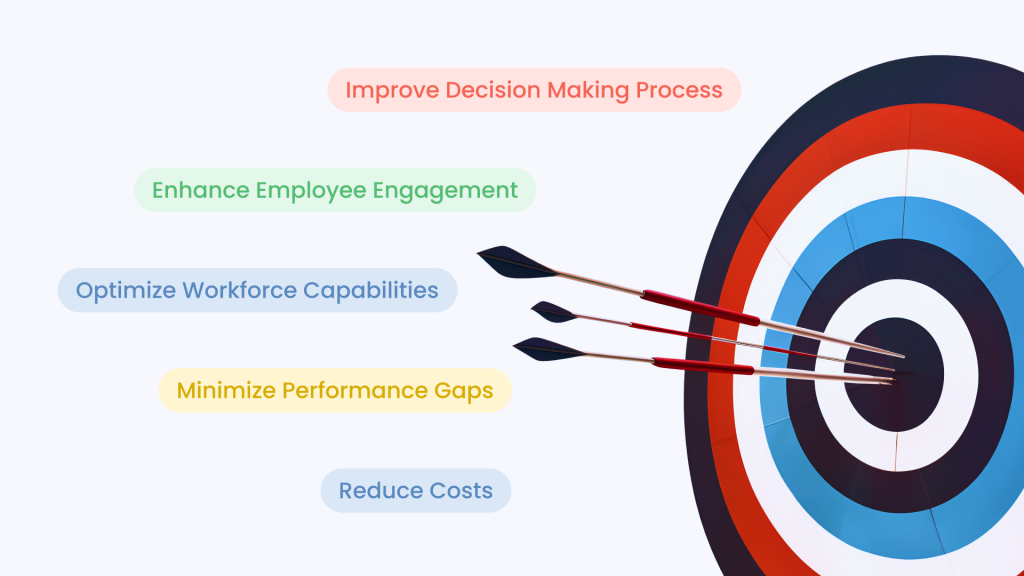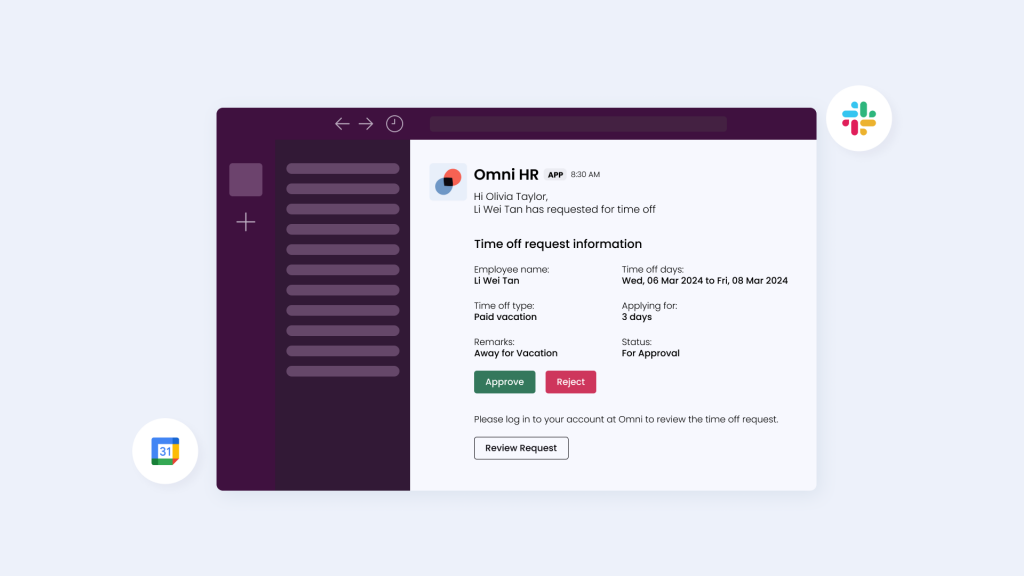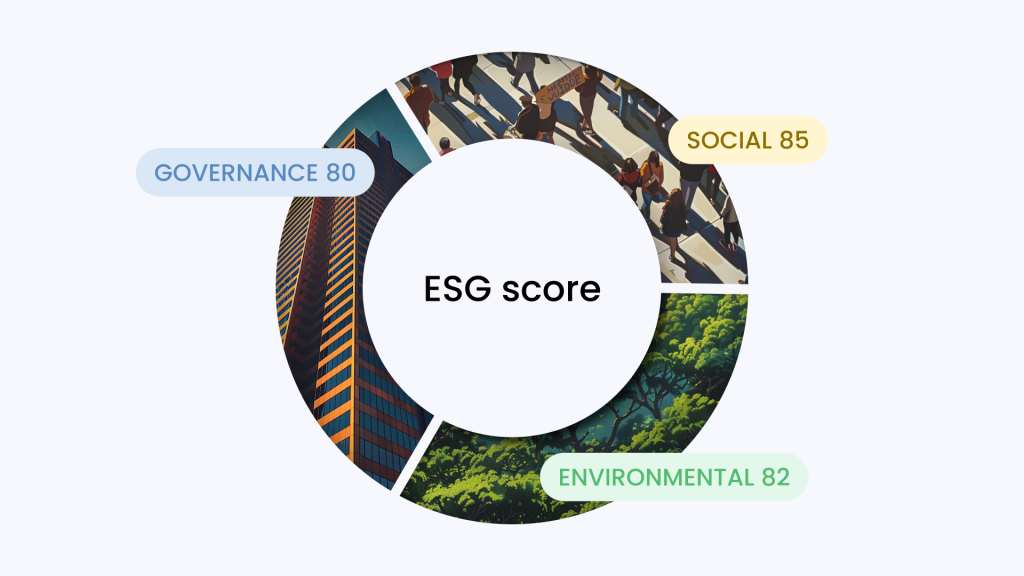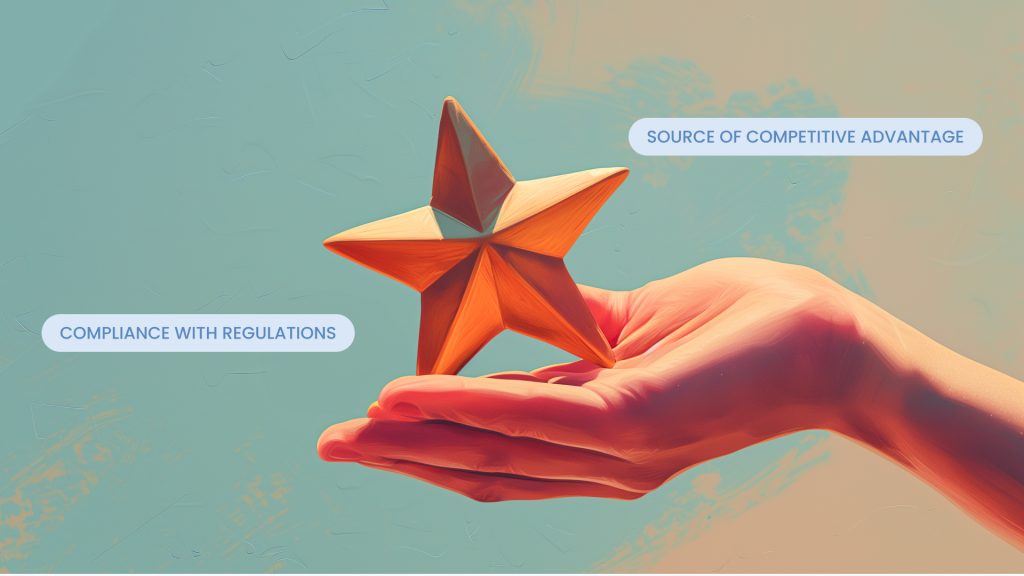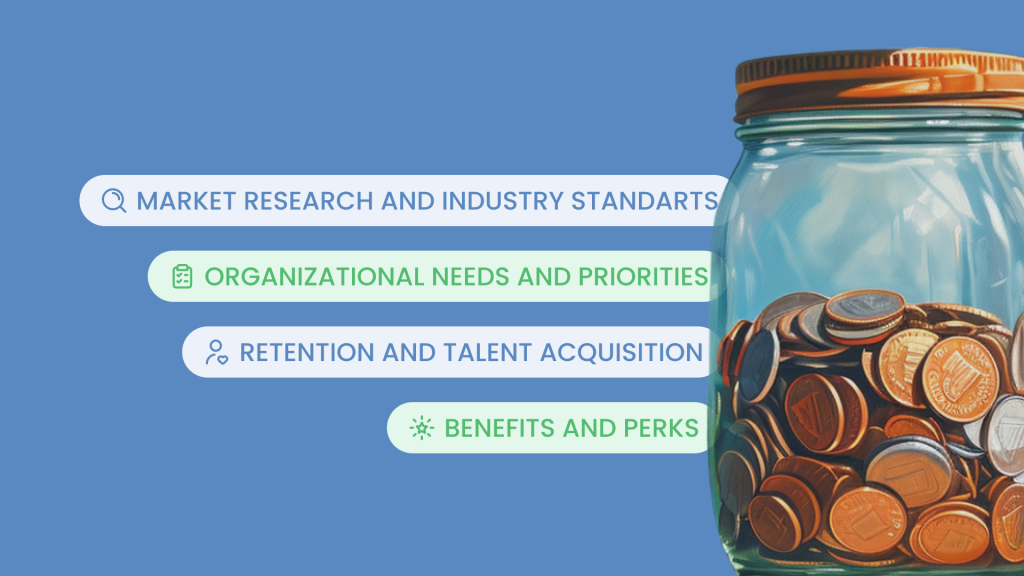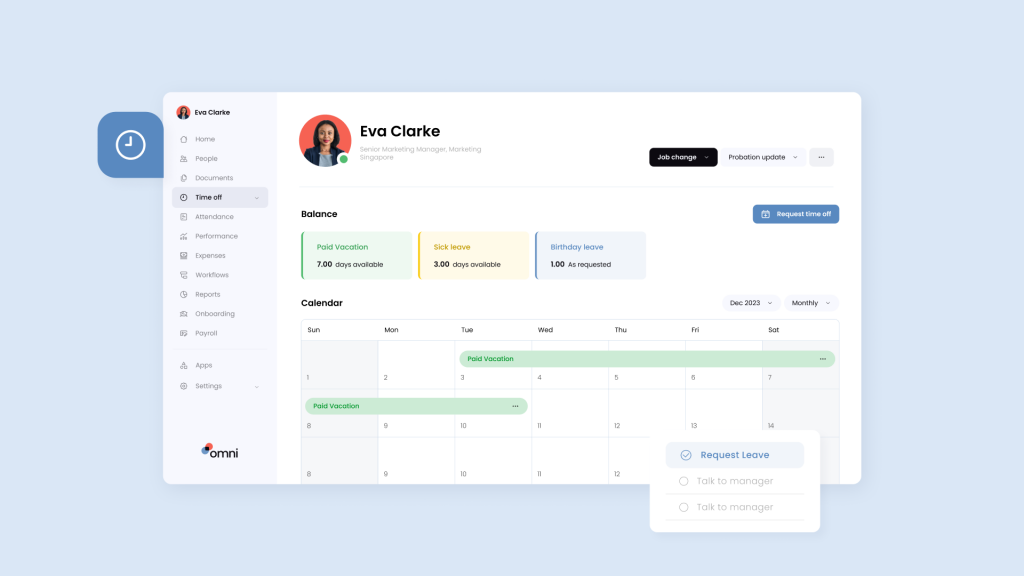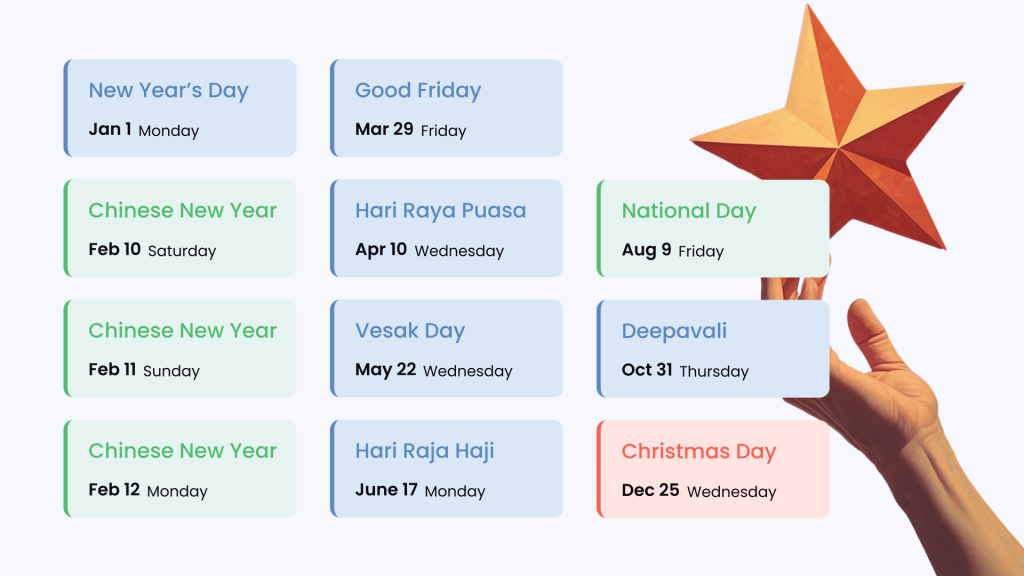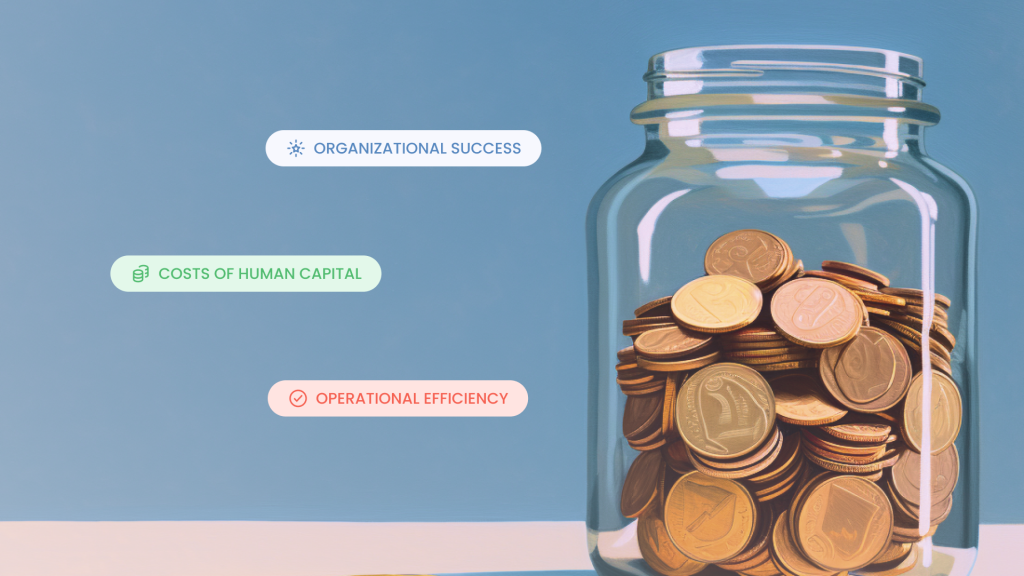An effective HR team is one that makes the most of their employee data. Employee data can be useful in predicting trends, avoiding inefficiencies and fostering a better workplace culture for everyone on the team. And because it’s so important, employee data management needs to be taken seriously.
It starts with security. Your team has to find ways to keep your employee information safe. But it also needs to be accessible—both for employees who have a right to their information, and to government regulators who might audit you to ensure compliance. Finding ways to balance your employee data management can be tricky, but it’s absolutely essential.
Here, we’ll take a look at what managing your employee data means, steps you can take to ensure you’re following best practices, and an employee data template that will help you get there.
Understanding Employee Data Management
Employee data management refers to the process that covers the collection, storage, organization, and use of different types of information related to employees within your organization.
This data includes personal details, employment history, performance evaluations, training records, compensation details, and more, which we’ll talk about more in the next section. Effective management of employee data is essential for your HR team to make informed decisions, ensure compliance with regulations, and support the top-level goals and company mission.
Proper employee data management requires a combination of technology, policies, and procedures to ensure accuracy, security, and compliance throughout your employees’ lifecycles. One major tool to consider are HRIS solutions—they play a crucial role in streamlining data management processes, enhancing data accuracy, and supporting HR professionals in their strategic initiatives.
Read next: 5 Ways Employee Database Software Elevates Your Business
Types of Employee Data
Not all data is the same, but when it pertains to your employees information, all data needs to be treated and handled correctly. Here are the different types of employee data you can expect to manage:
Core HR Data
- Personal information: This includes basic details such as name, address, contact information, date of birth, and social security or identification numbers. Personal information forms the foundation of your employee records and is necessary for identification and communication purposes.
- Employment details: Core HR data also encompasses employment-related information such as job title, department, reporting structure, hire date, employment status (full-time, part-time, temporary), and work location. These details provide insights into your employee’s role within your organization.
- Payroll and tax information: Employee payroll data includes salary or wage details, tax withholding information, deductions, bonuses, and direct deposit preferences. You need to ensure accuracy in payroll and tax data because it is essential for compliance with labor laws and regulations.
Job specific data
- Skills and qualifications: This category deals with information related to your employee’s skills, certifications, educational qualifications, and professional development activities. Tracking their skills and qualifications enables you and your team to identify performance gaps, plan training programs, and make informed decisions about job assignments and promotions.
- Performance data: Performance-related data includes employee performance evaluations, goal progress, feedback, and other HR metrics related to how well they perform in their role. Evaluating and documenting employee performance is important for providing constructive feedback, identifying areas for improvement, and recognizing high performers.
- Project assignments: Job-specific data also includes details of project assignments, current tasks, project timelines, and deliverables. Tracking project assignments helps managers and your HR team monitor workload distribution, assess project outcomes, and make sure resources are allocated where they need to be.
Additional data
- Benefits enrollment: This covers information about your employee benefits enrollment, including health insurance coverage, retirement plans, flexible spending accounts, and other benefits you offer your employees. Managing this data accurately is important for administering your benefit programs, tracking eligibility, and keeping compliant with benefit regulations.
- Time and attendance: Data related to employee attendance, work hours, time-off requests, and leave balances falls into this category. Time and attendance data is needed for processing payroll, monitoring employee attendance patterns, and ensuring compliance with labor laws regarding working hours and overtime.
- Travel and expense records: Information regarding employee travel expenses, reimbursements, business-related expenditures, and travel itineraries. Managing travel and expense data efficiently helps your organization control costs and track business expenses.
With effective employee data management, your HR department can streamline its processes, make informed decisions, and create a positive employee experience within your organization.
Importance of Accurate and Secure Employee Data
Everyone wants the peace of mind of knowing their data is safe but it’s more than that—laws and regulations govern employee data as it’s your team’s job to abide by all regulations and safeguard data accordingly. Here’s why it’s so important:
Compliance with regulations: Adhering to local, regional, and international regulations dealing with data privacy and protection is incredibly important. Accurate and secure employee data management ensures compliance with laws such as Singapore’s PDPA and other data protection regulations, and prevents your company from facing fines or other legal penalties.
Data-driven decision making: Reliable employee data management serves as the foundation for informed decision-making processes within your organization. You and your HR team rely on accurate data to understand workforce trends, identify areas for improvement, and develop strategic initiatives aimed at enhancing employee engagement, productivity, and retention. The proper storage and safekeeping of your employee data is essential for this.
Employee trust and confidence: Maintaining the integrity and security of your employee data builds trust and confidence among your team. When your employees feel confident that their personal and sensitive information is handled with care and confidentiality, they are more likely to engage with your HR processes and share relevant information.
Efficient HR operations: Accurate and up-to-date employee data streamlines your HR operations and administrative tasks such as payroll processing, benefits administration, performance management, and talent acquisition. With reliable data at your disposal, you can complete tasks more efficiently, with reduced errors and less administrative burden.
Risk mitigation: Making sure your employee data management is secure and accurate reduces the risk of data breaches, identity theft, and unauthorized access. Putting in place data security measures will protect sensitive employee information from threats and vulnerabilities.
Steps for Employee Data Management
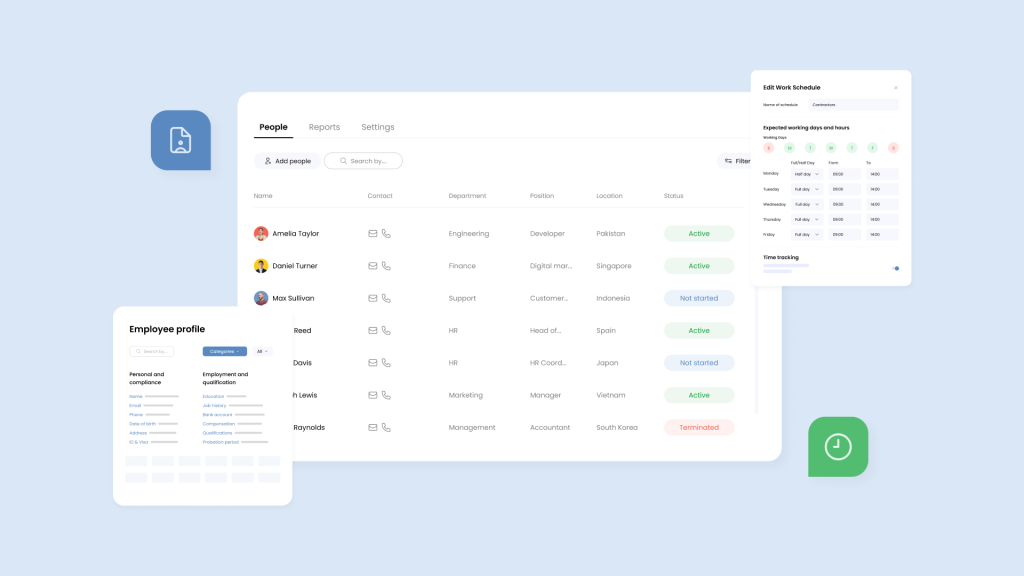
Once you’ve decided to prioritize your employee data management, you need to take the steps to secure it properly. Here’s an employee data template for your reference:
1. Define needs and implement security measures
Clearly define your organization’s employee data management needs and objectives, taking into account regulatory requirements and industry best practices. Implement robust security measures, including encryption, access controls, and user authentication, to protect sensitive employee information from unauthorized access and cyber threats.
2. Standardize data collection and maintain data accuracy
Establish standardized procedures for collecting, storing, and updating your employee data across your organization. Ensure data accuracy by regularly auditing and validating employee information, addressing any discrepancies or errors promptly. Put in place data quality controls and validation checks to maintain data integrity throughout the employee lifecycle.
3. Utilize HR technology and train HR staff
Leverage HRIS and other technology to streamline data management processes and enhance data accuracy and security. Provide comprehensive training and support to your HR team on the proper use of HR technology tools, data handling procedures, and compliance requirements.
Read next: The 7 Best HR Software Singapore Has to Offer in 2024
4. Develop a data retention policy and implement secure disposal
Next step in our employee data template is to develop a data retention policy outlining the types of employee data collected, retention periods, and procedures for secure disposal or deletion.
Make sure you’re adhering to regulatory requirements and industry standards when determining data retention periods.These include secure data disposal practices, such as shredding physical documents and permanently deleting electronic records, to minimize the risk of unauthorized access or data breaches.
If your team follows this employee data template, your organization can establish best practices that prioritize accuracy, security, and compliance, and reap the benefits that come from effective employee data management.
Employee Data Management Under PDPA Singapore
The Personal Data Protection Act (PDPA) in Singapore sets out specific rules for organizations managing employee data to ensure compliance with data protection regulations. Here’s what you need to know:
Compliance obligation
- Notice obligations: Your organization must inform employees about the purposes for collecting, using, and disclosing their personal data. This includes providing clear and concise privacy notices outlining the types of personal data collected, the purposes of collection, and how the data will be used.
- Consent obligation: Your organization has to obtain employees’ consent before collecting, using, or disclosing their personal data, unless an exception under the PDPA Singapore applies. Consent should be voluntary, informed, and obtained for specific purposes, and your employees should be able to withdraw their consent at any time.
- Access obligation: Employees have the right to request access to their personal data held by your organization and to request corrections if the data is inaccurate or incomplete. Your organization needs to establish procedures for handling access requests, and respond to them within a reasonable time.
Security measures
- Access controls: Your team needs to implement access controls to restrict access to employee data to authorized personnel only. This includes role-based controls, user authentication mechanisms, and password policies to prevent unauthorized users having sensitive data available to them.
- Data encryption: Employ encryption technologies to protect employee data during storage, transmission, and processing. Encryption helps protect data from unauthorized interception or access, making sure that sensitive information remains confidential and secure.
- Regular security audits: Conduct regular security audits and assessments to identify vulnerabilities, weaknesses, and compliance gaps in employee data management practices. These audits help your organization proactively address security risks and stay compliant with PDPA Singapore requirements.
Data retention
Develop clear data retention policies outlining how long employee data will be retained and how it will be securely disposed of. Your HR team will need to make sure that data retention periods align with legal requirements under PDPA Singapore and the needs of your business. You’ll also need to put in place secure disposal procedures in your employee data management practice to permanently erase or anonymize employee data that is no longer needed.
Utilizing HRIS to Achieve Accuracy and Security
HRIS platforms play a huge role in facilitating accurate and secure management of your employee data. Here’s how HRIS can help your organization achieve accuracy and security for managing employee data:
Automated data entry
HRIS platforms streamline data entry by automating the collection, storage, and retrieval of your employee information. Automated data entry enormously reduces the risk of human error and helps maintain data consistency over many different HR processes, like payroll processing, benefits administration, and performance management.
Access control
These platforms also incorporate robust access control mechanisms to restrict access to employee data on role-based permissions. Administrators can define user roles and permissions, making sure that only authorized people have access to sensitive employee information. Access control features help your team prevent unauthorized access and protect employee privacy.
Data encryption
Modern HRIS platforms use encryption techniques to secure employee data both at rest (when stored) and in transit (being exchanged among authorized users). Data encryption converts sensitive information into an unreadable format that can only be accessed with an encryption key. By encrypting employee data, HRIS platforms ensure confidentiality and protection against unauthorized access or data breaches.
Audit trails
Utilizing HRIS systems in employee data management can help maintain detailed audit trails that record all activities related to your employee data, including access attempts, modifications, and deletions. Audit trails provide visibility into who accessed specific data, when the access occurred, and what actions were taken. This transparency ensures accountability and helps you stay compliant with data protection regulations like PDPA Singapore.
Reporting and analytics
HRIS platforms offer robust reporting and analytics capabilities that enable your organization to gain insights into its workforce data. Your HR team can generate customized reports and dashboards to analyze employee metrics, track key performance indicators, and identify trends or patterns. By leveraging reporting and analytics tools for your employee data management, your organization can make informed decisions, optimize HR processes, and ultimately enjoy a boost in efficiency.
Read next: Your Guide to Successfully Pitching HR Software to Leadership
Leveraging Omni for Secure Employee Data Management
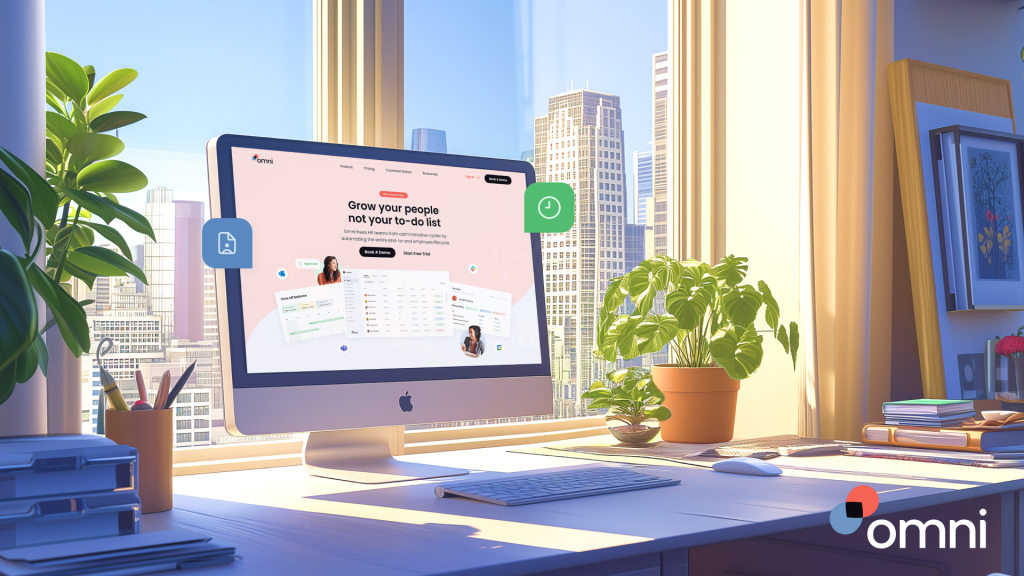
All-in-one HR software like Omni is a powerful tool for unifying all of the disparate employee data scattered across your company. As a single source of truth for employee data management, HRIS streamlines your HR processes and makes them more efficient.
Powering Asia’s fastest-growing, modern companies, Omni’s employee database software scales alongside your company so you can customize and leverage the system to meet your evolving employee data management needs while ensuring compliance with regulations like PDPA Singapore.
Omni’s intuitive and fully customizable platform integrates with your team’s favorite tools for a seamless and timely adoption. And at only $3/employee/month, you can leverage HR automation to decrease administrative costs.
Book a demo with our team today to learn how Omni can help transform your businesses employee data management processes.



